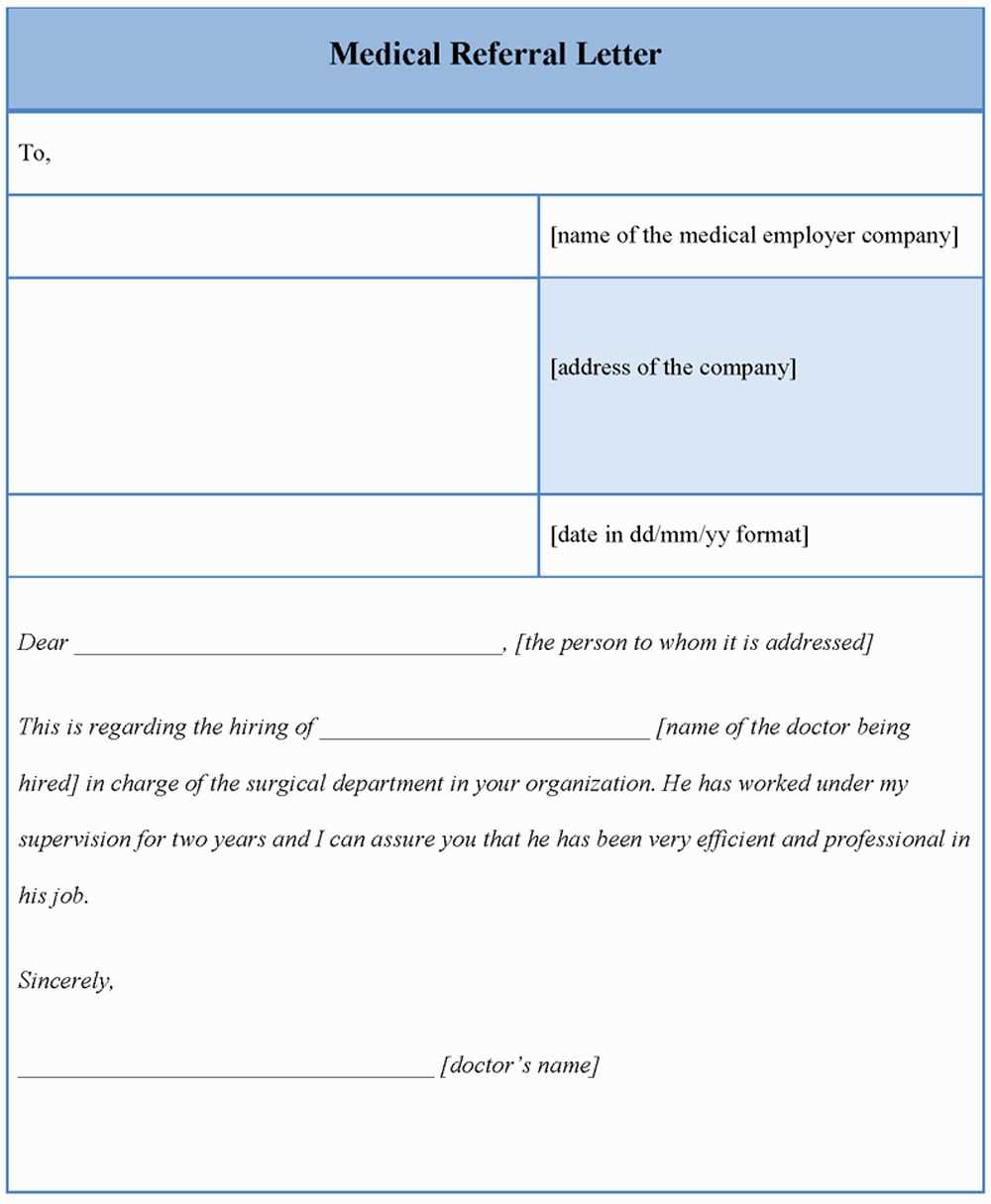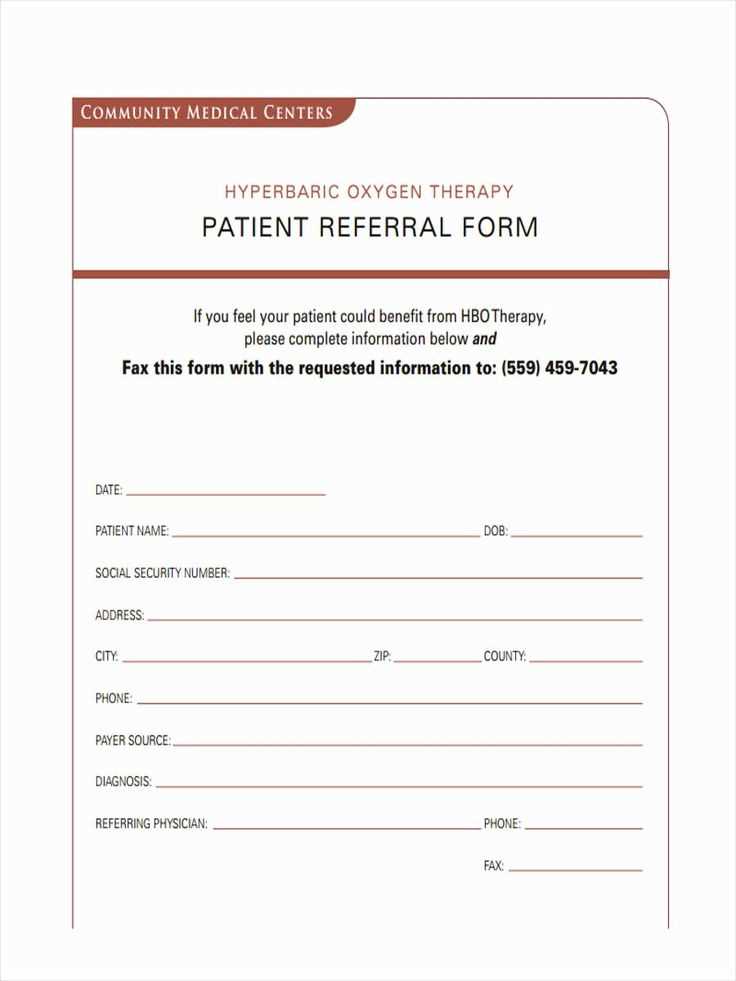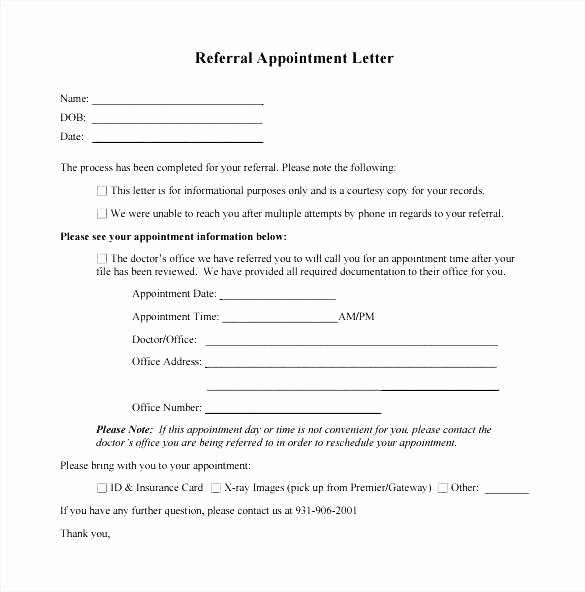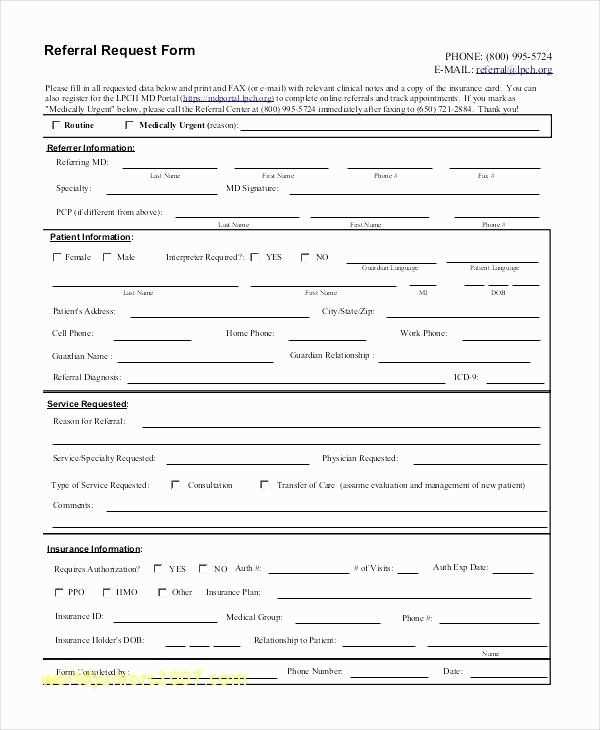Medical Referral Letter Template for Easy Use

When a healthcare provider needs to send a patient to another specialist or facility, it’s crucial to document the reason for the transfer. This ensures clear communication, promotes better patient care, and provides all necessary information for the receiving professional. A structured document can make the transition smoother and more efficient for both the patient and medical team.
Key Information for Effective Communication
A well-written document should include essential patient details, medical history, and the reason for the transfer. Including these components ensures that the specialist receiving the patient has all the necessary background to proceed with their treatment plan. Here are the key points to include:
- Patient’s full name and contact details
- Reason for seeking further care
- Relevant medical history and current conditions
- List of medications or treatments being used
Clear Instructions and Expectations
Along with patient information, it’s important to communicate the expected outcomes and any specific tests or treatments that the specialist should consider. This prevents confusion and ensures that both parties are aligned in their understanding of the patient’s needs.
Common Mistakes to Avoid
One common mistake in these documents is omitting essential information, which can lead to delays in care or miscommunication. It’s also important to avoid using overly technical language that might be difficult for the recipient to understand. Keeping the language clear and concise is crucial to making the process effective.
Best Practices for Writing Effective Documents
To ensure your communication is clear and helpful, follow these best practices:
- Be concise – Keep the content direct and to the point, while including only the most relevant information.
- Use professional tone – Always maintain a respectful and formal tone to convey credibility.
- Double-check accuracy – Ensure that all details, especially patient-related information, are accurate to avoid errors.
Improving the Documentation Process
Standardizing this type of communication can improve the overall quality of care. Healthcare facilities may benefit from developing specific templates or checklists to streamline the process. By reducing the amount of time spent on creating these documents, healthcare providers can focus more on patient care.
What is a Healthcare Transfer Document
Why Patient Transfers Matter
Key Elements of a Transfer Document
Steps for Writing a Transfer Document
Avoiding Common Errors in Transfers
Improving the Transfer Process Effectively
Effective communication between healthcare providers is crucial when a patient needs to be moved to a different specialist or care facility. This process ensures that all the necessary information about the patient’s condition, treatment history, and future care is clearly shared, allowing for a smooth transition and continuity of care.
Why Transfers are Vital for Patient Care

When a healthcare provider decides to transfer a patient to another professional or facility, it ensures that the patient gets the right treatment or expertise that may not be available in the current setting. Such transfers help ensure better outcomes by connecting patients with specialists who have the expertise required for specific conditions.
Essential Information for Effective Transfers
A well-documented transfer should include the following key elements:
- Patient’s complete details – This includes name, age, contact information, and any identifying data.
- Reason for transfer – Clearly outlining the need for further care and the medical circumstances driving the decision.
- Medical history and treatments – A comprehensive overview of past treatments, current medications, and any ongoing conditions.
- Key medical results – Any relevant test results or imaging that the receiving party should be aware of.
These elements ensure that the professional receiving the patient has all the information necessary to proceed with their treatment plans and avoid unnecessary delays.
Steps for Writing an Effective Transfer Document

Creating an effective transfer document involves careful attention to detail. Follow these steps to ensure clarity:
- Provide a brief but clear reason for the transfer, including relevant medical background.
- List all medications, ongoing treatments, and test results to ensure the specialist is well-informed.
- End the document with clear instructions or requests, indicating what you expect from the receiving specialist.
Double-check the accuracy of all patient data and medical history to avoid errors that could affect the patient’s treatment.
Avoiding Common Errors in Transfer Documents

Common mistakes include leaving out critical information, using ambiguous language, or failing to include clear instructions. It’s essential to ensure that the document is easy to understand and contains all the necessary details for a seamless handoff. Miscommunication can delay treatment or lead to incorrect care decisions.
Standardizing the document format and ensuring that each transfer follows a clear, structured approach can improve the process and reduce the risk of errors. This way, healthcare providers can focus on the most important aspect–delivering quality care to patients.